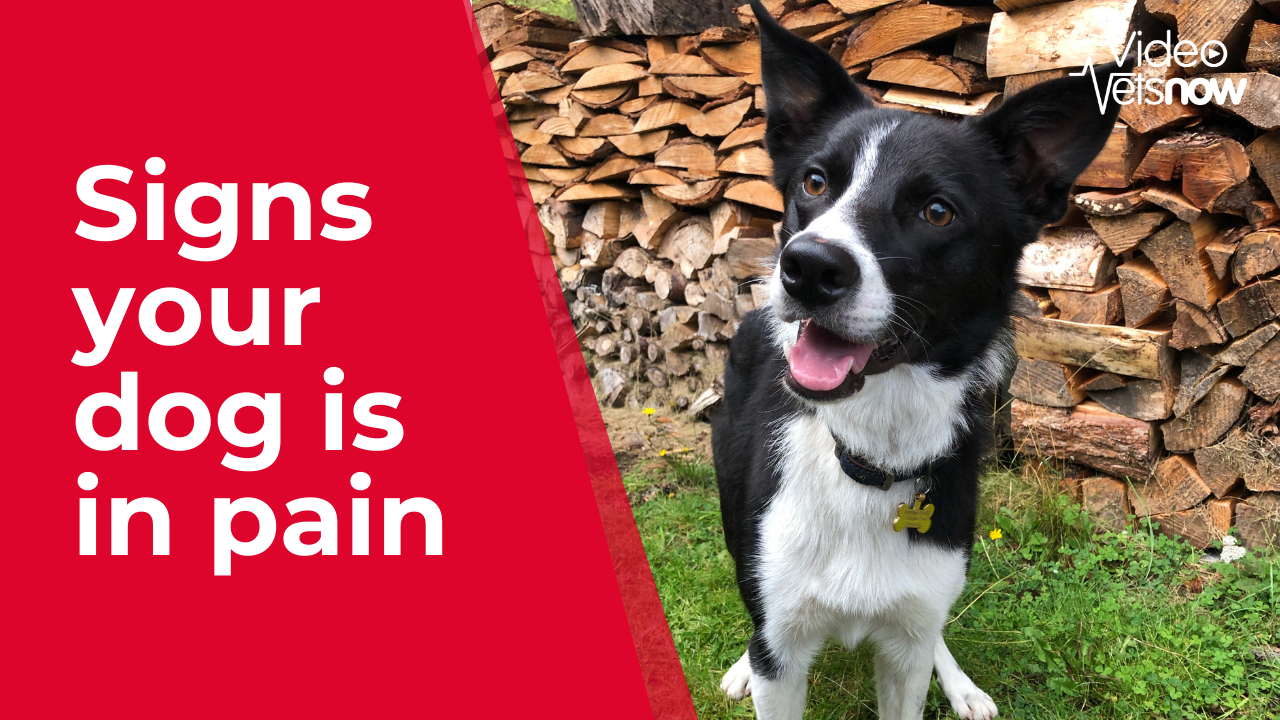Do you need help?


How do I know if my dog is in pain?
Often our dogs suffer in silence. Because dogs can’t speak, it can sometimes be difficult to spot when they’re pain, whether it be as a result of injury or an underlying issue. However, there are a number of signs, some more obvious than others, which can indicate pain in dogs.
Please do not attempt to treat your dog’s pain yourself. Many human medications – and those prescribed for other pets – can be very dangerous for dogs.
1. Antisocial or aggressive behaviour
Dogs might stop running to greet you at the door, try to avoid contact, or even become aggressive. If your dog is hiding away or appears to be unusually antisocial, it could be an indication that they’re in pain. Any noticeable change in behaviour can be cause for concern.
2. Changes in eating, drinking, and sleeping habits
Dogs that are in pain often sleep more – they may be trying to heal, or it might even be difficult for them to move around and be active. A loss of appetite and noticeable differences in the amount of water they’re drinking are often common symptoms. Difficulty eating, particularly dried food or firm chews, can indicate dental pain.
3. Being more vocal
Dogs that are experiencing pain tend to be more vocal. Excessive yelping, growling, snarling, and even howling could be your dog telling you that something isn’t right.

4. Excessive grooming
If your pet is licking their paws constantly, it’s likely they’re trying to soothe themselves. When a dog is hurt, its first instinct is often to clean and care for the wound by licking it. Cuts are more obvious, however, sometimes the pain can be internal.
5. Heavy panting or altered breathing
Panting is normal. However, a dog that is panting heavily even though they have not been exercising is a warning sign. Also, breathing that is more shallow means that it could be painful to take a breath.
6. Mobility issues
Stiffness and limping are two of the more obvious signs of pain in dogs and are likely a result of injury, sore paws, or even arthritis. Your dog might be reluctant to climb stairs or is noticeably slow when getting up. This can also manifest itself as reduced interest in exercise, or not being as active as usual.
7. Signs of agitation
Restlessness is an indicator of pain in dogs. If your dog is pacing back and forth repeatedly, difficulty getting comfortable, or is sleeping a lot less, there could be an underlying issue.
8. Changes in their body and posture
When in pain, some dogs have a very rigid and hunched stance while others assume the ‘prayer’ posture with their front legs on the ground and their bottom in the air. Dogs often take the ‘prayer’ position when they are suffering from abdominal pain as it allows them to stretch this area out.
9. Shaking or trembling
Don’t assume trembling or shaking is just your dog feeling cold or, indeed, getting old. Both can be a sign of pain – or a symptom of something more serious such as poisoning, pancreatitis, or kidney disease. Dogs who have swallowed large amounts of chocolate, mouldy compost or sugar-free sweetener xylitol, for example, often suffer severe muscle tremors.

Also on this topic
Treatment for dogs in pain
There are a variety of medications that you can use to provide pain relief for your dog. Please speak to your vet about the most appropriate. However, any underlying conditions – such as a broken bone – will need to be treated and in some cases may require surgery.
Will a dog in pain eat?
Just like humans, dogs suffering pain may go off their food. If your dog’s appetite suddenly changes or you notice any form of inappetence, you should seek veterinary advice, as this could be a symptom of a dangerous ailment.
What can pet owners do to help dogs in pain?
While your dog is recovering limited movement and physical activity is recommended. Soft, padded bedding and a quiet, comfortable environment will also help speed up your dog’s recovery.
Ensure your dog receives the correct dose of any medications prescribed by your vet. Each dog will react differently to the type and dosage level of pain medication so always monitor your dog’s response and if you have any concerns contact your vet.
